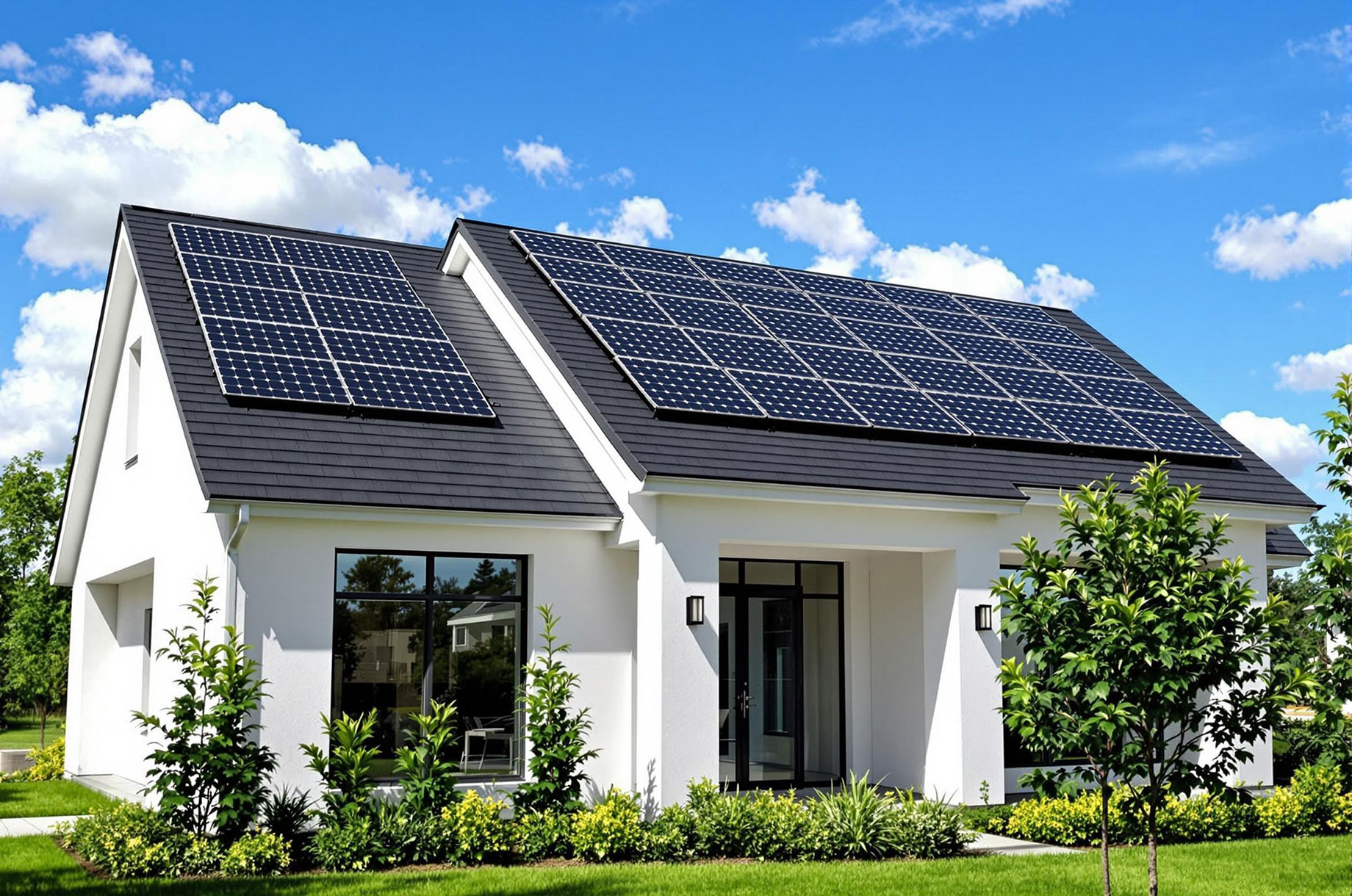
You’ve probably seen houses with solar panels on the roof or even large arrays in the yard – they’re common, but these traditional solar power setups look clunky and awkward. Today, you can get solar shingles that are both your roof and your source of solar power. Even though conventional solar panels dominate the market, solar shingle sales are growing every year. With U.S. rooftop solar capacity projected to double by 2027, the aesthetic and practical appeal of solar shingles is hard to ignore.
Let’s dive into why this new roofing solution might be a smart upgrade for your home.
What are solar shingles?
Solar shingles are an innovative material designed to function like traditional roofing shingles while simultaneously generating power. Since they’re installed as your roof, they seamlessly blend into your roofline, combining protection with solar energy.
Unlike traditional bulky solar panels, solar shingles replace your roofing materials. This allows you to maintain your home’s architectural integrity while benefiting from solar power. No eyesore required. Some shingles are made from copper indium gallium selenide, and others are made from monocrystalline silicon, which happens to convert energy more efficiently.
Solar shingles can look just like slate or asphalt, and in addition to collecting solar power, solar shingles will protect your home from the elements. For instance, they have been shown to hold up well in hailstorms and winds just like regular asphalt shingles.
Solar shingles have a long lifespan when installed professionally
Solar shingles can last around 25-30 years, which is comparable to a typical roof lifespan. This means you won’t have to spend extra time and money investing in additional installations. You just need a roofing company that installs solar shingles. This particular system takes longer to install and requires more preparation, waterproofing, and precision. When you hire a pro for the job, you’ll get a warranty on the work, and that should be non-negotiable.
While you might be tempted to do the job yourself and save money, roofing is a specialized skill beyond what most DIYers can handle. There are already numerous points of error that can compromise the integrity of a normal roofing system when self-installed. Installing solar shingles takes even more expertise than a typical roofing job, and that includes repairs. While you might be able to replace a single or two on your own with just a few nails, solar shingles need a little more care.
Is there a downside to solar shingles?
As with any roofing system, whether it’s metal, asphalt, or TPO, there are some disadvantages to consider before installing solar shingles. For example, they’re slightly less efficient than traditional panels and you’ll need more units (shingles) to generate an equal amount of power. For example, while a full solar panel generates up to 400 watts, a solar shingle will generate between 13-70 watts. Since shingles are much smaller than traditional panels, that’s to be expected. However, if your priority is maintaining the aesthetics of your home with clean lines, that’s a small price to pay.
In terms of cost, solar shingles can cost more than double what you’d pay for traditional solar panels, but they qualify for federal tax credits and state programs. For example, the Inflation Reduction Act allows a federal tax credit of up to 30% of your installation costs through the end of 2032. You’ll also need to install them with a full or partial roof replacement, which means larger costs up front. Still, solar shingles can help you save a lot of cash on your electric bills, and homes with solar roofs sell for 3-5% more – sometimes much higher – because of the aesthetics and energy savings.
All in all, you can expect to break even within 10-15 years if you account for energy savings and an increased home value.
Performance and efficiency
Under real world conditions, solar shingles don’t tend to get as hot as traditional panels, which supports better performance in colder climates. Some people say this can even out the difference in efficiency. Tests have shown that solar shingles perform similarly to standard asphalt shingles in terms of impact resilience. They’re also low-maintenance and will continue to perform for many years while helping you lower your utility bills.
Solar shingles are a smart roof investment
Solar shingles might cost more upfront than traditional panels, but they’re not just powering your home – they’re also your roof. When you choose solar shingles, you’re getting flawless aesthetics and solid protection from the elements. It’s a great way to add curb appeal and lower your energy bills. If you’re already looking into a roof replacement, solar shingles could be the smartest home upgrade you make.